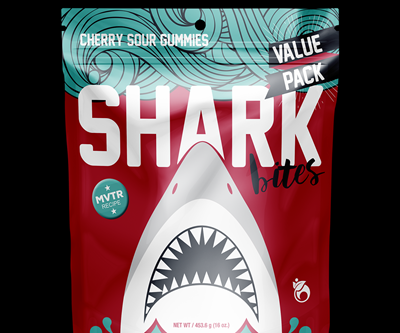Packaging: Protection and Sustainability in a Single Pack
E-commerce explosion and the growing preference for fresh products are raising the bar of packaging protection capabilities, while keeping the track on sustainability.
Kyra Douglas, senior director of global regulatory affairs at PLASTICS, emphasizes that the efficient use of packaging to protect the product while it is delivered is a mega-trend in the industry that has gained more relevance, for two main reasons. One is the food sector, where there is a focus on healthy, locally produced food and delivery of fresh products. The other aspect is e-commerce packaging, now that a lot of shopping is done online.
According to Mark Kay, performance films market group leader of Nova Chemical “Booth W207AB,” e-commerce packaging has up to five times more “touches” between the product manufacturing and when it reaches the consumer’s home. “Packaging must have superior abuse resistance than traditional packaging, and seal integrity is critical, particularly for food and liquid packaging,” he says.
Consumer awareness is driving packaging developments to solutions to extend food freshness in terms of extending shelf life, reducing additives in the food formulations, preserving healthy ingredients and ensuring safe delivery. “Nowadays people believe that the right packaging helps to reduce food waste,” says Miguel Ramirez, head of RBL Masterbatches from Clariant in Latin America (Booth S18155).
Dr. Maria del Pilar Noriega, director of the Institute for the Plastic and Rubber Research and Training in Colombia (ICIPC), remarks that a lot of innovations are intended to save the food. “In the world, one third of the food is lost in different stages. In developed countries, this loss happens more often at the end of the chain, in the supermarkets, while in developing countries this loss occurs at the beginning in plantations, and transportation to the farmers’ markets,” she says.
The intent to protect goods has driven the growth of using complex structures for packaging solutions. Dr. Noriega predicts an increase in so-called hybrid packaging that combines paper, cardboard and plastic in an effort to improve lifecycle analysis and provide better indicators of sustainability.
Adam Gendell, associate director of the Sustainable Packaging Coaliton (SPC), says that innovations from converters are bringing structures that have the performance benefits of multi-material substrates—but without the unfavorable hit to recyclability that usually accompanies them. “Today we have an unfathomable breadth of material combinations to achieve the diverse range of product needs, and recyclers are phobic of material complexity. In the future, multi-material packaging might be less intimidating to recyclers,” he adds.
Adds Douglas of PLASTICS, “Multilayer film is gaining a lot of attention with novel technologies in the bioplastics space to recycle or recover it for energy. The lifecycle analyses are clear that the environmental footprint of flexible packaging is very good, so there are a lot of possibilities with the multimaterial and multilayer film.”
Ligthtweighting and downgaging are also a megatrend that allows a packaging solution to keep up the desired performance, produce savings and also address sustainability issues. In this regard, Claudia Hernandez, senior development specialist at Dow (Rooms S310, S311and S312), mentions stretch film as an example. Using precision packaging resins from Dow, it is possible to reach higher levels of elongation. “The film is thinner but is able to maintain properties with less amount of product,” she says.
Related Content
Film Extrusion: Boost Mechanical Properties and Rate of Composting by Blending Amorphous PHA into PLA
A unique amorphous PHA has been shown to enhance the mechanical performance and accelerate the biodegradation of other compostable polymers PLA in blown film.
Read MoreResins & Additives for Sustainability in Vehicles, Electronics, Packaging & Medical
Material suppliers have been stepping up with resins and additives for the ‘circular economy,’ ranging from mechanically or chemically recycled to biobased content.
Read MoreAvoid Four Common Traps In Granulation
Today, more than ever, granulation is an important step in the total production process. Our expert explains a few of the many common traps to avoid when thinking about granulators
Read MoreHow to Optimize Injection Molding of PHA and PHA/PLA Blends
Here are processing guidelines aimed at both getting the PHA resin into the process without degrading it, and reducing residence time at melt temperatures.
Read MoreRead Next
Packaging: Safe, Smart, Sustainable
In packaging, most of the innovations in materials, recycling, recyclability, lightweight and renewable resources are oriented toward sustainability. But there are many paths. Processors, material suppliers, and industry leaders weigh in on their approaches.
Read MoreWhy (and What) You Need to Dry
Other than polyolefins, almost every other polymer exhibits some level of polarity and therefore can absorb a certain amount of moisture from the atmosphere. Here’s a look at some of these materials, and what needs to be done to dry them.
Read MoreTroubleshooting Screw and Barrel Wear in Extrusion
Extruder screws and barrels will wear over time. If you are seeing a reduction in specific rate and higher discharge temperatures, wear is the likely culprit.
Read More


























